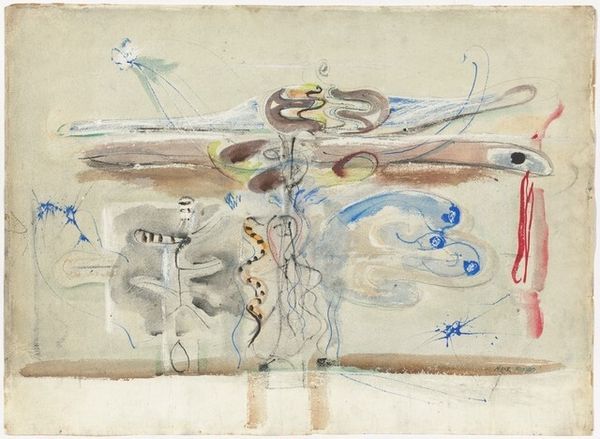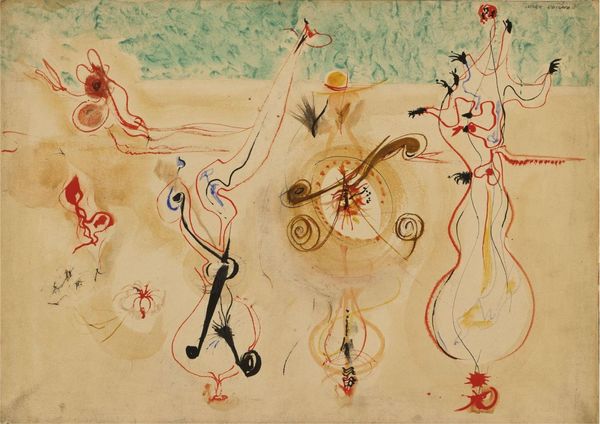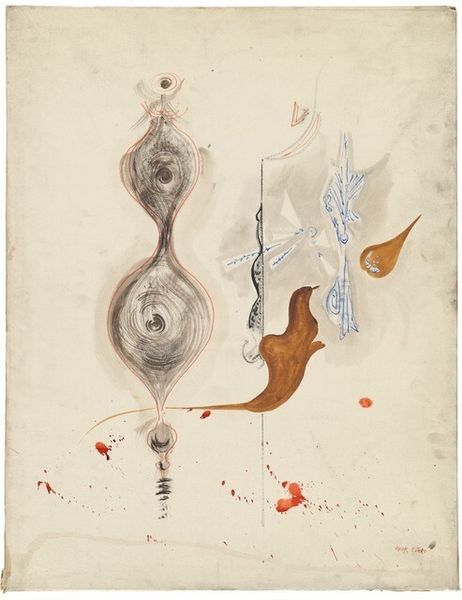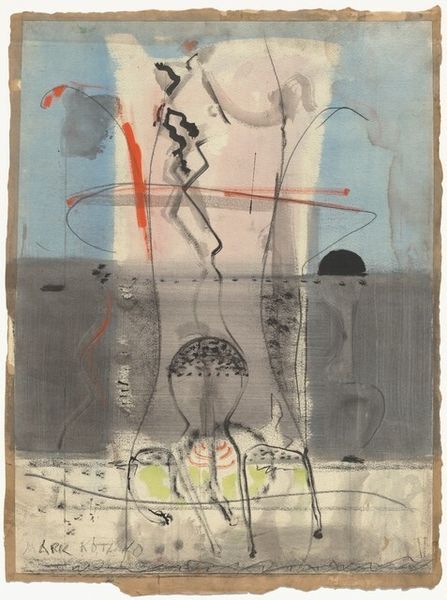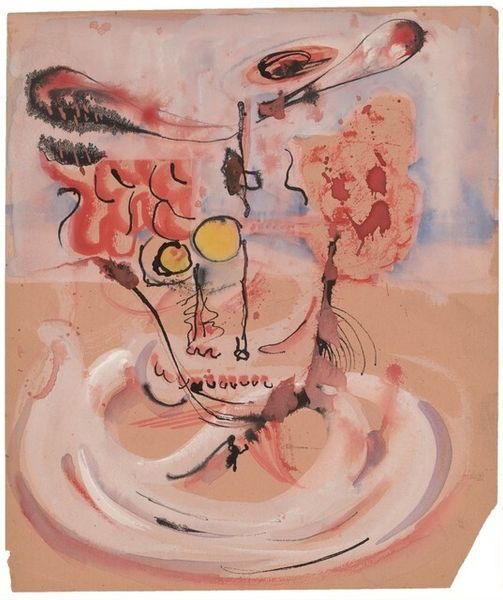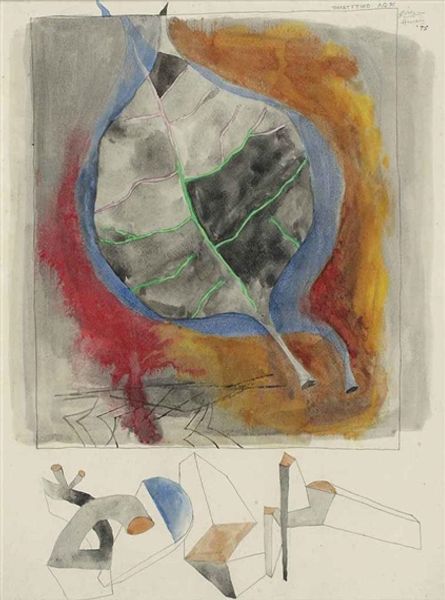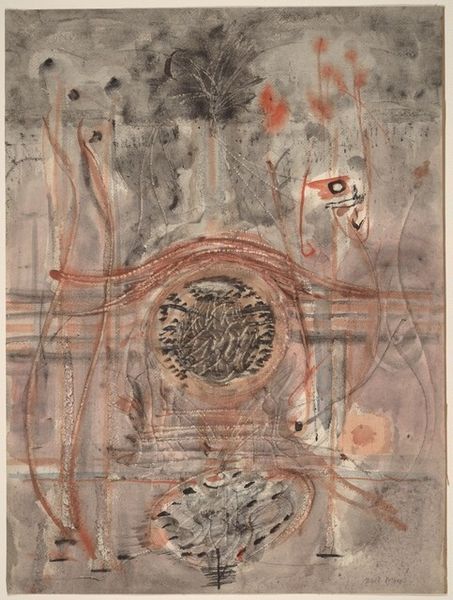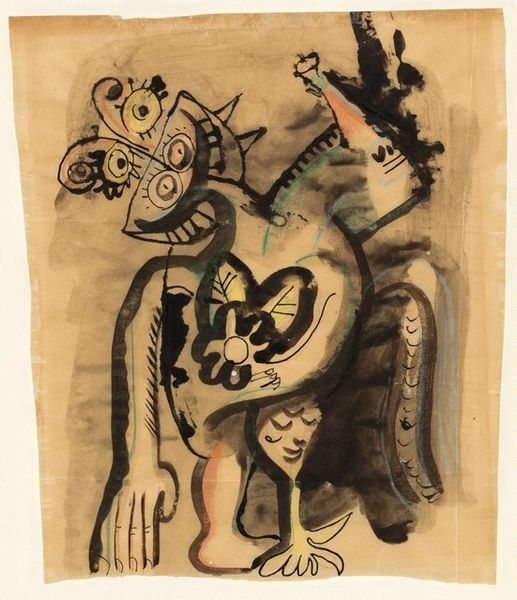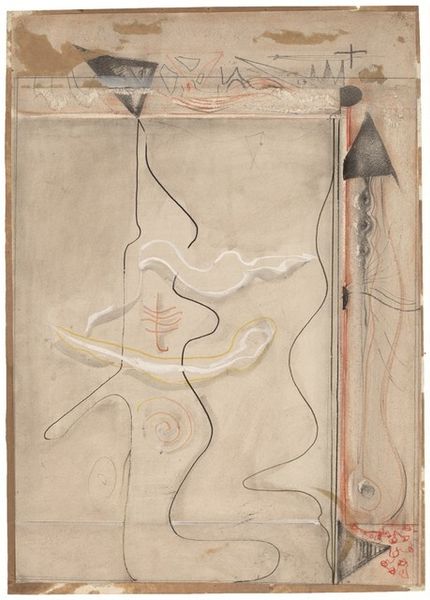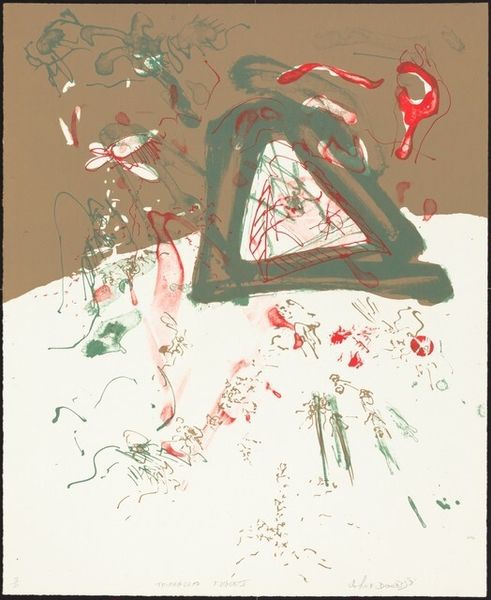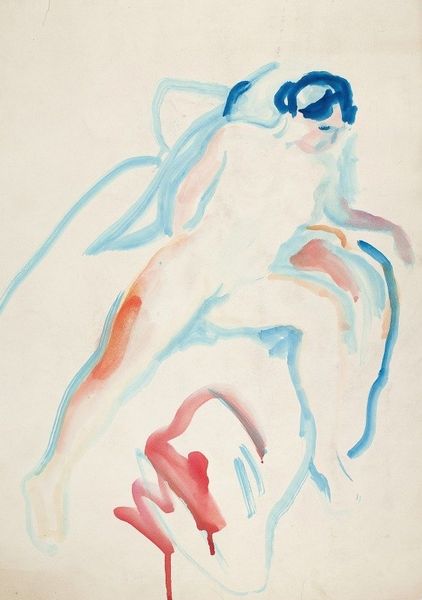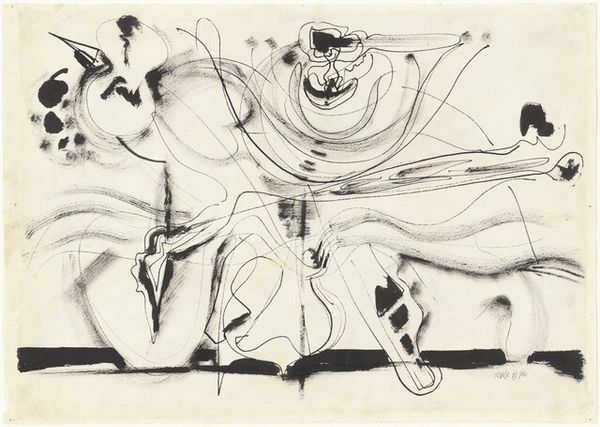
drawing, paper, watercolor
#
abstract-expressionism
#
drawing
#
water colours
#
paper
#
form
#
watercolor
#
coloured pencil
#
abstraction
#
line
Dimensions: overall: 53.2 x 37.8 cm (20 15/16 x 14 7/8 in.)
Copyright: National Gallery of Art: CC0 1.0
Editor: Here we have Mark Rothko's "Abstract Composition," likely created around 1944. It’s a watercolor and colored pencil drawing on paper. I'm struck by the apparent chaos, yet there’s something pleasing about the way the colors interact and how the shapes, despite being abstract, suggest a kind of hidden structure. What do you see in this piece? Curator: I observe an artist deeply engaged with formal concerns. Note the layering of translucent washes, the assertive yet delicate lines of the colored pencil. Rothko orchestrates a dynamic interplay between positive and negative space. Do you perceive how certain shapes seem to advance, while others recede? Editor: I do. The black shape at the bottom, for instance, feels like it's coming forward. How intentional do you think the 'suggestiveness' of forms are, rather than explicit representations? Curator: Intention is difficult to ascertain definitively, but we can examine the compositional strategies employed. Consider how the verticality of certain lines contrasts with the more organic, biomorphic shapes. The artist presents a dialectic between order and disorder, control and spontaneity. He exploits the inherent qualities of the medium to achieve this end. What is your impression of Rothko’s choice of color? Editor: I notice the limited palette: primarily pinks, blues, greens, and that single red circle at the top. It creates a dreamlike, almost ethereal mood. The color is like another layer in this controlled chaos. Curator: Precisely. Color here isn’t descriptive; it's structural. It delineates forms, creates spatial relationships, and contributes to the overall dynamism of the composition. And by limiting the colour, we're better able to focus on what little remains, bringing that form even further into the foreground. Editor: It's fascinating to see how Rothko's working with line, color, and form itself can evoke such a complex response. I appreciate understanding its structure, rather than trying to pin down some meaning within the shapes. Curator: Indeed. This piece invites us to appreciate the formal language of abstraction and how it functions in itself as the primary intention and context of this artwork.
Comments
No comments
Be the first to comment and join the conversation on the ultimate creative platform.

